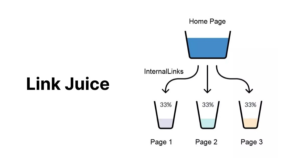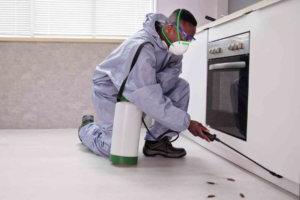Handyman Naperville is a skilled professional who can perform various tasks. They often save homeowners time and money by eliminating the need to hire a more specialized contractor.
They make holes, cracks, and dents disappear to revive indoor spaces’ visual and structural integrity. They also know how to mount light fixtures and can fix small electrical concerns.

Fish tape is a tool that allows handymen to run wires behind walls, in crawl spaces, or inside ducts without having to cut holes in the drywall. It’s also ideal for navigating around obstructions like framing members, concrete block, or plumbing.
Often coiled in a plastic reel, it’s easy to extend the fish tape to the area where wiring is needed and then push it through. It’s usually non-conductive for safety around energized wires, and it can come in either steel or fiberglass versions. Fiberglass is lighter, less prone to kinking, and resistant to corrosion in damp environments. The most common steel fish tapes are rated for a specific conduit size, but you can also find ones that are able to navigate short runs through walls or ceilings.
Some fish tapes even feature a built-in light that helps you see the area you’re feeding wire through better. It’s an ideal option for datacom techs who need to snake cables through a dark overhead plenum or drop ceiling. Other innovations include a variety of measurement markings on the fish tape itself, which eliminates the need for an additional measuring device, as well as rust-resistant, laser-etched marks that won’t scratch off over time.
Before you use your fish tape, prepare it by stripping insulation from the end of each wire. Wrap the bare wire ends together and then twist them through the fish tape hook to align them, and wrap the entire hook and wires with electrical tape. It’s also a good idea to apply some kind of lubricant to reduce friction as you feed it through the wall or conduit. Once you’ve reached the desired location, pull the fish tape back through its casing to re-coil it for another trip.
Electrical Tape
Electrical tape is a handy tool for a variety of projects. It offers insulation, protects wires from abrasion and corrosion, helps make temporary pigtail splices, and can even be used to make quick repairs. However, it’s important to understand how to use electrical tape correctly to ensure safety and success on the job.
There are several types of electrical tape, each with its own specific use and intended application. It’s important to select the right tape for the project based on its voltage and temperature rating, environmental conditions, and more. For example, if the work will be performed outdoors, look for a tape that has a higher temperature rating and can withstand cold temperatures.
Another key thing to remember when using electrical tape is that it works best when molded to the object rather than being wrapped rigidly over it. Stretching the tape while wrapping it allows for a tighter application that better seals the surface. Finally, it’s important to overlap the first and last wrap by at least half of the tape’s width.
Lastly, electrical tape is often sold in different colors. This is not to confuse the user, but to allow for easy identification of different wires and items. Knowing what each color represents is important for the safety of a task, as careless use of these tapes can lead to major electrical issues.
There are also other tools that can be used by a handyman to assist in electrical projects, such as heat shrink tubing and wire connectors. In general, these products are used in the same way as traditional electrical tape, but may be more suited for heavy-duty applications or harsh environments.
Miter Saw
A miter saw is an important tool for any handyman, since it allows them to quickly and accurately cut wood for projects. Its main purpose is to make angled cuts, called miters or square butt joints. This allows for the fast and easy assembly of picture frames or other box-type projects. It is a simple table saw that swivels the blade and head to create different angular cuts by simply rotating the base or the work piece.
The swiveling action also makes it possible to make a bevel cut by tilting the blade from vertical to angular across the workpiece. These two kinds of cuts are often combined to form compound cuts. Some models include extensions to support longer pieces or have stops that flip up for repeat cuts. Other features include a laser or indicator, an adjustment handle and a trigger.
Before using a miter saw, it is important to familiarize yourself with the equipment and its operation. Refer to the manual for more information. It is also a good idea to test out the saw on some scrap material. Be sure to wear safety glasses and ear protection, as the saw is quite loud. The miter saw should also be properly calibrated. Start by checking the blade to ensure it is aligned with the fence and perpendicular to the base. Next, check the bevel adjustment to see if it is set correctly. Finally, test out the miter cut by cutting a piece of scrap lumber and seeing where the laser lands on it.
After using the miter saw, clean up the area and the saw. It is recommended to use a shop vacuum rather than a household one, as this type of saw produces a lot of dust. A dust collection bag is an optional accessory, as well.
Hammer
A hammer is one of the most essential tools for any renovation contractor. It’s a handheld tool that consists of a handle and a head. Hammers can be used for various purposes like driving nails, pounding metal, and breaking apart objects. There are several types of hammers that can be used by handymen, such as claw hammers, ball-peen hammers, and sledge hammers. Some hammers also have interchangeable heads that can be switched out.
A handyman will typically carry a variety of different hammers in order to complete their jobs. They can use these to perform various tasks, from drywall installation to carpentry work. Having access to a wide range of tools allows them to save time and money by not having to go out and rent or buy new equipment each time they need to tackle a different project.
The hammer is an ancient and versatile tool that has been used by many different cultures throughout history. It is often associated with power, strength, and the gods. It is often used as a symbol in flags and heraldry. It is also commonly seen in religious icons and as a symbol of mining.
When used correctly, the hammer can be an effective trading signal in the market. It can help to identify reversals and buy signals, especially when accompanied by a strong candlestick pattern. Traders can then place their stops below the low of the hammer pattern, providing protection in case the price does not revert upward as expected.
A hammer can be a very dangerous tool when it is not used properly. It is important to always wear safety glasses when hammering. In addition, it is important to avoid using every ounce of your body’s strength when hammering. This can lead to wild swings and bent nails. Instead, the weight of the hammer and your smooth swing should provide enough force to do the job.
Tape Measure
A tape measure is an important tool for handymen, providing a quick and accurate way to make measurements. A tape measure can be used to find the length of a board or piece of furniture, as well as to determine the distance between two points. It can also be used to cut wood to size. In addition, a tape measure can help to identify electrical wiring in a home or office.
A standard tape measure has inches on one side and metric measuring markings on the other, but there are also dual-scale tape measures available that have both measuring scales. It’s important to choose a tape measure that meets your needs.
Some tape measures include markings for stud spacing in construction, making it easier to locate a stud without using a stud finder. Some also feature a sliding hook that moves back and forth slightly to compensate for the thickness of the metal end, ensuring that you get a true zero measurement every time.
Most tape measures also include a lock to keep the tape in place when you’re carrying out a measurement. It’s also important to take care of your tape measure so that it lasts as long as possible. One mistake that many people make is to let the tape snap back into its case at full speed. This can damage the internal recoil mechanism and lead to inaccurate readings.
Instead, it’s best to guide the tape back slowly so that it retracts smoothly and doesn’t cause kinks. You should also periodically check to see that the end hook is still securely attached. If it is loose, you’ll need to replace it.








